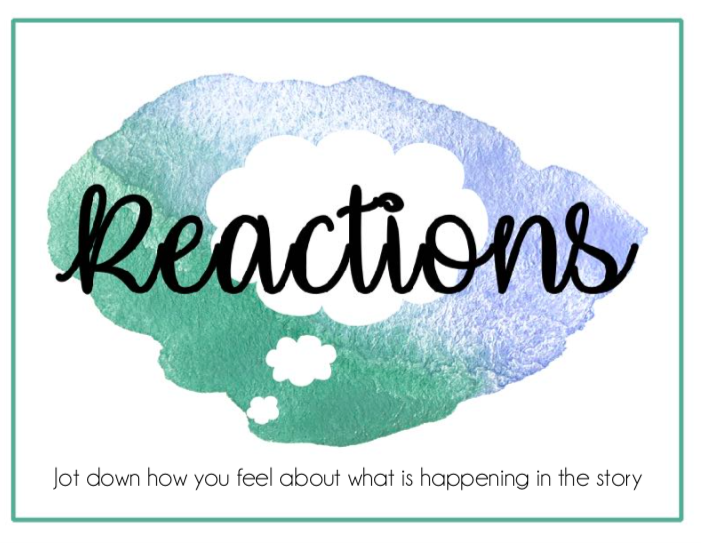Reading Strategy for Middle School: Annotations
If there is one thing I do every day in my classroom, this would be it!
Annotations
(sometimes we call them jots…it just depends on how fancy we are feeling that day)
I LOVE them! It is perfect to keep students focused and THINKING about what we’re reading. Research shows that when you read with a purpose, you are more likely to retain and understand what you’re reading, and annotations are a perfect way to help students have a purpose.
I KNOW deep in my teacher heart that this strategy is super useful, and a tool that will carry with them throughout their educational journey. Therefore, to make this reading strategy as meaningful as possible, I am very structured and consistent with how I teach and implement the annotations.
Because they are so useful to my middle school students, I want to share with you the annotations I use every year! These are the ones I have found to be most helpful for my students to become active readers.
Annotations:
Doodle: Jot images that pop into your head while you’re reading
Big Ideas: Jot down the big things that are happening
Questions: Jot down the questions that pop into your head
Hashtags: Jot down short and fun summaries and reactions about what you’re reading (#ohnoshedidn’t, #badidea, etc)
Conflict: Jot down the problems that are happening
Motivations: Jot down WHY a character or author is doing something
Reactions: Jot down HOW what you’re reading makes you feel and WHY.
Cause and Effect: Jot down what is happening and why.
Quotes: Jot down significant and meaningful quotes.
How I Teach Annotations as a Reading Strategy:
I teach each annotation one at a time. I tell them, “today while we are reading we are going to jot all doodles. These are images that pop into your head while we read.” Since I believe picturing what you read is a foundational skill for comprehension, I ALWAYS teach this first. Even in middle school. The majority of my students come to me not having this skill since it was never explicitly taught or practiced on a consistent basis. After I teach one annotation, I build on it by teaching another in isolation, and then combining it with what we already know. Before long, we are doing 9 annotations for one reading!
I teach them the codes for each annotation. If you look closely in the images above, there are images in the middle of each poster. These are the codes that I teach to go along with each annotation. When they know the codes, it is easier for them to annotate while reading, and it is easier for me to tell them what annotations we are doing each day.
I provide a consistent method for annotating. EVERYDAY we are reading, I have students annotate. I needed a way to keep them organized with their annotations, so I came up with jot boxes. It is just like a tic tac toe board they set up in their notebook. (check out the notebook set up below. For more info on these, click here) They draw and code the boxes (see examples below) and we fill them in as we read. Since we do this every day and every time we read, when they read independently or for a test, they draw their own jot boxes on their blank paper! This is something that makes my teacher heart happy! Now, it does not happen automatically, I have to set it as an expectation, and praise, praise, praise like it’s the best thing ever when they do it, but eventually it becomes a habit and second nature to them.
4. I celebrate awesome and thoughtful annotations. You are always going to have students who half way do things just to get it done and check. the box of completion. Since I want annotations to be a tool for thoughtful and active reading, I have to celebrate and make examples of students who do this well. I have a JOT Stars! board where I hang amazing examples of annotations. I always make a big deal about this, and point out to the other students what I like about the jots. I have found this encourages more students to do their best work, and to really think about their annotations. As a result, they grasp what they are reading a little better, and are able to understand it on a deeper level.
Here is an example of jot boxes, codes, and completed annotations.
They draw the boxes ahead of time and code them. While we read, they fill in the appropriate annotations.
The top part of the notebook is where students will draw their annotation boxes.
The bottom part of my notebook set up board lists out the annotation codes for what we are doing that day. For more on my notebook set-up, click here.
Actual quote from student: “I, like, remember stuff more when I jot. It, like, helps me understand and stuff.”
Hahaha! Don’t you just love it when a plan comes together?
If you like my posters and want to start a practice of implementing annotations on a daily basis,
click on over to my store.
I have put together a helpful pack that includes the posters, activities, and foldables you can use to guide your students toward active and purposeful reading.
Would you like a free annotation infographic for your classroom? Click below for the download!











